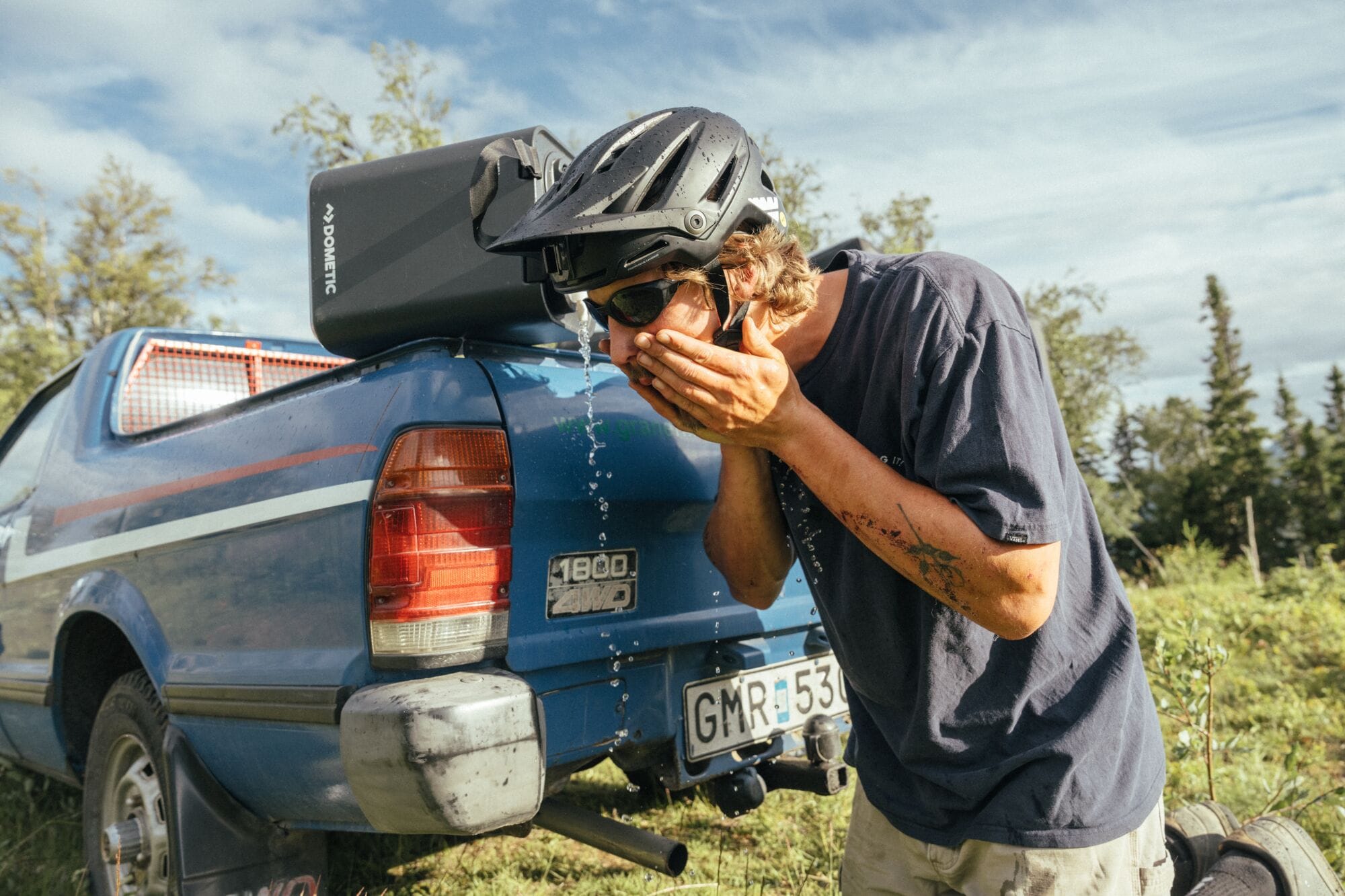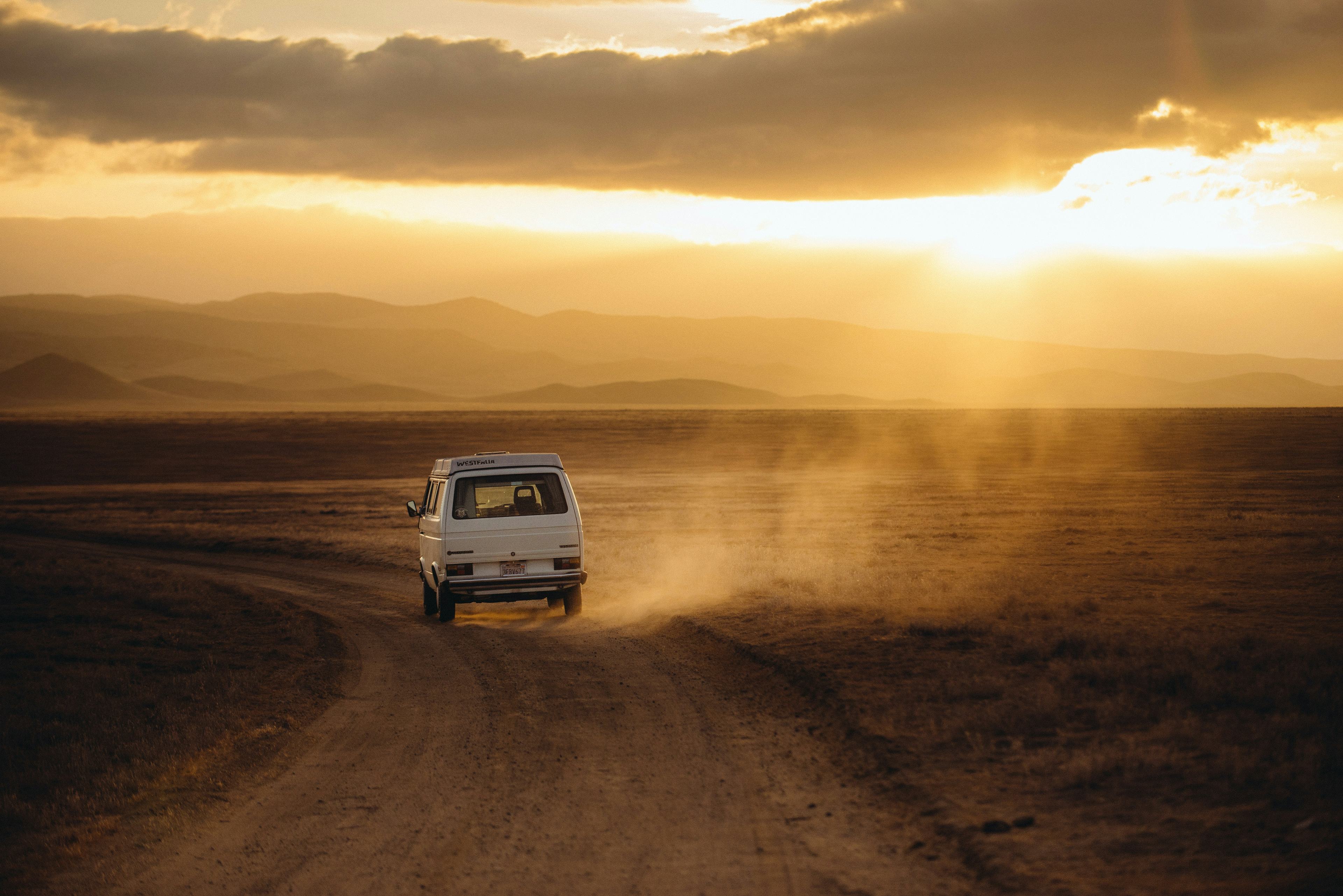How One Man’s Water Jug Changed the Overland Industry
Owen filtering water in Lago de Atitlan, Guatemala | Owen Mesdag
With a background in global water access and a knack for intuitive design, Owen Mesdag reimagined the humble water jug.
For the past decade, Owen Mesdag has been on a quest to change the way people carry water. A product manager at Dometic, he was responsible for the brand’s Go Water Hydration Jug and Faucet, which allowed travelers to literally bring the kitchen sink with them to the campsite. “It changed everything. All of a sudden, having running water in the campsite was completely acceptable, and people wanted it,” Mesdag says. “Water jugs stored the water how you wanted it, they dispensed it how you wanted it, and the water faucet made it even more fun and accessible.”
Mesdag’s obsession with water began during his time as a product manager at MSR, a brand that focuses on backpacking stoves, tents, and, among other things, water filters. While there, he traveled to Guatemala and Nepal delivering water treatment devices to people in remote locales. At one point, he encountered outbreaks of cholera and typhoid in Nepal, and because there wasn’t any bottled water, he and his crew had to treat and carry their own water in jerry cans to avoid getting sick.
That experience, along with countless other car camping adventures, got his design wheels spinning. “Jerrycans were designed to hold gasoline, and now we made them blue and we call them water jugs. They do a good job holding the water when you don't need it, but as soon as you need the water, they become an absurd pain in the ass,” Mesdag says. “They're 40 pounds, and when you try to get the water out, they don't pour well.”
Dometic, a vehicle accessory and outdoor gear brand, tapped Mesdag in 2020 to lead its car camping product division. In addition to developing a line of camp furniture, Mesdag pitched the company on water products, which he says are among of the most under-addressed products in the outdoor space.
Most jugs available at the time, for instance, were cumbersome and heavy, so Mesdag started tinkering. He cut the standard dimensions in half—literally. He designed a jug so that if you stack two of them, they’d be the same dimensions as a standard 20-liter jerrycan. That makes Dometic’s jugs lighter and easier to stow in any vehicle.

Consumers also found issues with the small opening on traditional containers, making them hard to fill and clean. Mesdag gave the Dometic jug two openings—one large enough to facilitate a proper cleaning, and a smaller opening that’s the same size and thread count as a Nalgene bottle, allowing campers to use any filter attachment that interfaces with a Nalgene. That meant it was easy to filter water directly into the jug and eliminate the risk of cross-contamination. He also designed a quick-connect fitting on the lid of the larger opening that pairs with newer, gravity-style filters.
Another feature Mesdag was particularly proud of, and one that perhaps best exemplifies his design chops, is the hand-sized recess on the bottom of the jug that acts as a handle when you’re pouring water out. “That’s actually one of my favorite features. People don’t realize it’s there. They take it for granted,” he says. “If people take something for granted and don’t notice what you did, then you did it right.”
The Dometic Go Hydration Faucet, a portable, battery-operated accessory with an integrated pump, connects easily to the water jug. It has a built-in light so campers can see while washing their hands or brushing their teeth at night, and a flat, magnetic bottom so it can attach it to any metal surface and easily set up a wash station.

The faucet-jug combo has been so popular that many adventure rig builders—both DIYers and professional outfits like Peace Vans and Four Wheel Campers—are now using it in place of traditionally plumbed water systems. Using one jug for a fresh tank, one jug for a gray tank, folks can have a fully-functional water system in a camper that they can easily remove and clean—eliminating the need for winterization.
“I knew it was going to be a good product, but I didn't realize that people would take to it the way they did,” Mesdag says. “It wasn't my intention to try to create the next best. I was just trying to create the right thing.”

Summer 2025 Digital Issue: Camping Gear
Summer’s here and adventure is calling. For the Summer 2025 digital issue of Wildsam Magazine, we rounded up all the right gear you'll need for ambles through America while soaking up the sun.


